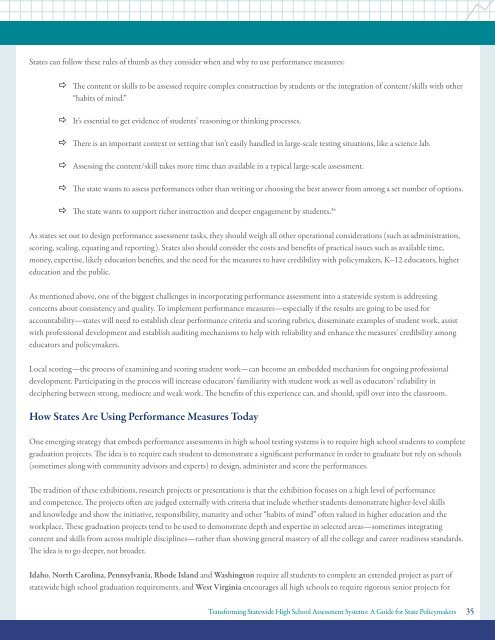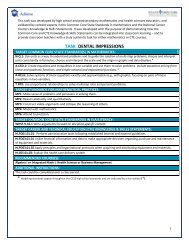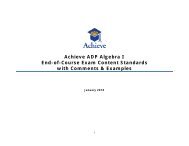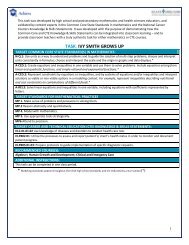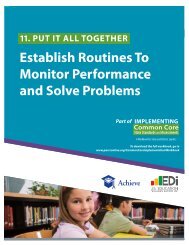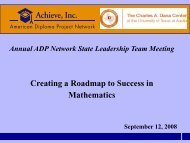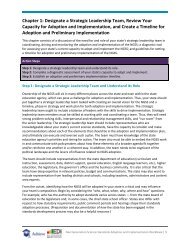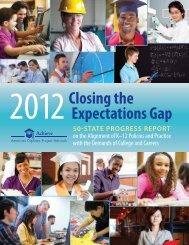Transforming Statewide High School Assessment Systems: - Achieve
Transforming Statewide High School Assessment Systems: - Achieve
Transforming Statewide High School Assessment Systems: - Achieve
Create successful ePaper yourself
Turn your PDF publications into a flip-book with our unique Google optimized e-Paper software.
States can follow these rules of thumb as they consider when and why to use performance measures:The content or skills to be assessed require complex construction by students or the integration of content/skills with other“habits of mind.”It’s essential to get evidence of students’ reasoning or thinking processes.There is an important context or setting that isn’t easily handled in large-scale testing situations, like a science lab.Assessing the content/skill takes more time than available in a typical large-scale assessment.The state wants to assess performances other than writing or choosing the best answer from among a set number of options.36 The state wants to support richer instruction and deeper engagement by students.As states set out to design performance assessment tasks, they should weigh all other operational considerations (such as administration,scoring, scaling, equating and reporting). States also should consider the costs and benefits of practical issues such as available time,money, expertise, likely education benefits, and the need for the measures to have credibility with policymakers, K–12 educators, highereducation and the public.As mentioned above, one of the biggest challenges in incorporating performance assessment into a statewide system is addressingconcerns about consistency and quality. To implement performance measures—especially if the results are going to be used foraccountability—states will need to establish clear performance criteria and scoring rubrics, disseminate examples of student work, assistwith professional development and establish auditing mechanisms to help with reliability and enhance the measures’ credibility amongeducators and policymakers.Local scoring—the process of examining and scoring student work—can become an embedded mechanism for ongoing professionaldevelopment. Participating in the process will increase educators’ familiarity with student work as well as educators’ reliability indeciphering between strong, mediocre and weak work. The benefits of this experience can, and should, spill over into the classroom.How States Are Using Performance Measures TodayOne emerging strategy that embeds performance assessments in high school testing systems is to require high school students to completegraduation projects. The idea is to require each student to demonstrate a significant performance in order to graduate but rely on schools(sometimes along with community advisors and experts) to design, administer and score the performances.The tradition of these exhibitions, research projects or presentations is that the exhibition focuses on a high level of performanceand competence. The projects often are judged externally with criteria that include whether students demonstrate higher-level skillsand knowledge and show the initiative, responsibility, maturity and other “habits of mind” often valued in higher education and theworkplace. These graduation projects tend to be used to demonstrate depth and expertise in selected areas—sometimes integratingcontent and skills from across multiple disciplines—rather than showing general mastery of all the college and career readiness standards.The idea is to go deeper, not broader.Idaho, North Carolina, Pennsylvania, Rhode Island and Washington require all students to complete an extended project as part ofstatewide high school graduation requirements, and West Virginia encourages all high schools to require rigorous senior projects for<strong>Transforming</strong> <strong>Statewide</strong> <strong>High</strong> <strong>School</strong> <strong>Assessment</strong> <strong>Systems</strong>: A Guide for State Policymakers 35


